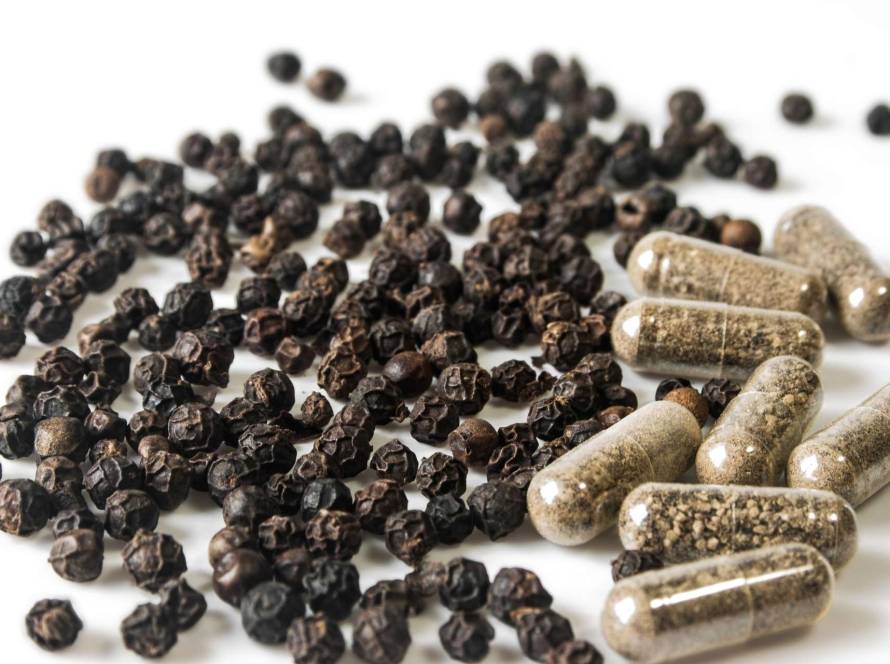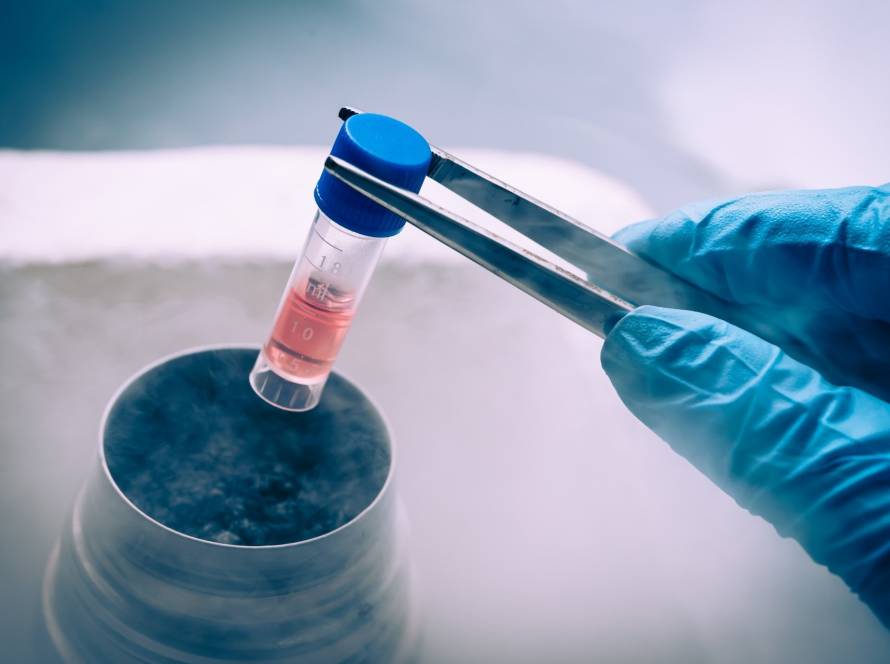Pterostilbene is a natural compound that belongs to the stilbene famil, and it’s closely related to resveratrol, the antioxidant found in red wine and grapes. In fact, pterostilbene is often called the “better absorbed cousin” of resveratrol.
This piece tucks into scientific evidence supporting pterostilbene’s impact on inflammation, cardiovascular health and metabolic function. We also explore its safety profile and optimal usage patterns thoroughly, by looking for the side effects of pterostilbene.
Common side effects of pterostilbene supplementation
Pterostilbene is safe in moderate doses, but research shows some side effects we should know about before taking supplements. This knowledge helps us make better decisions about adding this compound to our wellness routine.
Gastrointestinal symptoms and their prevalence
Stomach discomfort tops the list of pterostilbene supplement side effects. Clinical trials show these symptoms are usually mild and don’t last long, affecting only a small number of users. A double blind randomized controlled trial with 111 patients who took pterostilbene with nicotinamide riboside for 6 months showed adverse events that were “mostly gastrointestinal issues”. Research also noted “transient reflux and transient loose stools” in people taking these supplements.
The risk of digestive issues goes up with higher doses. Common stomach related symptoms include:
- Mild stomach discomfort;
- Nausea or upset stomach;
- Diarrhea or loose stools;
- Reflux sensations.
The compound shows promise in treating chronic constipation by “increasing the levels of MTL and Gas” hormones that control gut movement. This suggests its effects on digestion are complex and might even help with certain conditions, despite causing discomfort in some people.
Headaches and neurological complaints
Studies mention headaches now and then, but brain related side effects are rare. One clinical trial listed “mild headache” among adverse events, though researchers couldn’t tell if pterostilbene or the placebo caused it.
The compound actually protects our brain. It can cross the blood brain barrier better than many other supplements. Research shows it has “protective effects in CNS disorders” through several ways including “antioxidant and anti-inflammatory activity” and “improvement of synaptic function”.
Our brain’s response to pterostilbene explains both its benefits and occasional side effects. It changes neurotransmitter systems and cellular pathways, which leads to therapeutic benefits but might also cause headaches, especially at higher doses.
Changes in energy levels and sleep patterns
Pterostilbene affects how our body uses energy and how we sleep. A newer study calls it “a powerful anti-obesity and sleep improving agent” that helps build “reconstruction of a healthier sleep architecture”. It also shows “wakefulness promoting and weight reducing effects” in obesity studies.
Research proves pterostilbene “significantly prolongs exhaustive swimming time” and improves “exercise fatigue biochemical parameters, including creatine kinase and lactate dehydrogenase” [5]. This means better energy use and less exercise fatigue.
Sleep benefits look promising. Studies found pterostilbene “attenuated the sleep dysfunctions” and brought “sleep and wakefulness time to a normal level” in diet induced obese mice. It boosts “delta power during the transition from wakefulness to NREM” while cutting down “frequent transitions from NREM to wakefulness stages”. This points to more stable and restful sleep.
All the same, some users notice changes in their sleep or energy levels as side effects, especially when they start taking it or use higher doses. These energy changes usually balance out as our body gets used to pterostilbene’s effects.
Pterostilbene benefits: what scientific research reveals
Scientific research has shown that pterostilbene provides multiple health benefits through powerful biological mechanisms. Let’s look at these research findings and see how this compound’s unique molecular structure adds to its remarkable therapeutic potential.
Antioxidant and anti-inflammatory mechanisms
Pterostilbene works as a potent antioxidant through both direct and indirect pathways. Research shows it effectively neutralizes harmful reactive oxygen species (ROS). This ROS-scavenging ability helps prevent cellular damage that leads to chronic diseases.
The body’s natural antioxidant defenses get a boost from pterostilbene through:
- Activating the Nrf2 signaling pathway, which regulates cytoprotective and antioxidant genes;
- Upregulating critical antioxidant enzymes including heme oxygenase-1 (HO-1), superoxide dismutase (SOD), catalase and glutathione peroxidase (GPx);
- Mediating the recruitment of P62 autophagic cargo with Keap-1, inducing the autophagic degradation of Keap-1.
Pterostilbene’s anti-inflammatory properties are remarkable. Studies show it reduces inflammation by lowering inflammatory indicators, particularly tumor necrosis factor-alpha (TNF-α) and blocking NF-κB activation. Research has found that pterostilbene decreased the lipopolysaccharide-triggered expressions of inducible nitric oxide synthase (iNOS) and cyclooxygenase (COX)-2, as well as levels of interleukin (IL)-6, TNF-α and nitric oxide (NO).
Pterostilbene shows stronger anti-inflammatory effects than resveratrol. This comes from its improved liposolubility due to the substitution of a hydroxyl group with a methoxy group, which helps absorption.
Disease prevention potential
Research points to pterostilbene’s promise in preventing various diseases. It protects cardiovascular health by upregulating tight junction proteins ZO-1 and claudin-5 while downregulating adhesion molecules ICAM-1 and VCAM-1. This helps maintain vascular integrity. The compound also guards against atherosclerosis by regulating vascular smooth muscle cells and vascular endothelial cells.
Unlike many supplements, pterostilbene crosses the blood brain barrier easily. Studies confirm it guards against lipopolysaccharide induced inflammation, oxidative stress and blood brain barrier disruption. These properties make it promising for conditions like Alzheimer’s disease by improving synaptic function.
Pterostilbene shows strong anti-diabetic properties in metabolic health. When given at 40 mg/kg over 6 weeks, it showed remarkable ability to neutralize free radicals in diabetic rats, which led to a notable decrease in oxidative stress, according to research.
Longevity and cellular health effects
Pterostilbene affects fundamental aging processes, which leads to its longevity benefits. Research describes it as “a powerful anti-obesity and sleep improving agent” that helps create healthier sleep patterns.
The compound improves cellular health by affecting key aging processes, including oxidative damage, inflammatory responses, telomere attrition and cellular senescence. One study found flies given 50 μM pterostilbene lived 14% longer than control flies.
Pterostilbene works with sirtuin proteins to coordinate cellular resilience, longevity and metabolic balance. It also triggers autophagy, the cellular “cleaning” process that removes damaged components, which provides thorough protection against age related decline.
Drug interactions and contraindications
Pterostilbene interacts with drug-metabolizing enzymes, which is a big deal if we have to take medications. Learning about these interactions helps reduce risks and leads to better treatment outcomes through proper safety measures.
Medications affected by pterostilbene
Pterostilbene acts as a strong inhibitor of several enzyme pathways vital for drug metabolism. Research shows it strongly inhibits UGT1A9 with an IC50 value of just 0.92 μM and Ki value of 0.52 μM. This means medications that UGT1A9 breaks down might face interaction risks, including:
- Furosemide (diuretic);
- Propofol (anesthetic);
- Mycophenolic acid (immunosuppressant);
- Raloxifene (selective estrogen receptor modulator);
- Retigabine (anticonvulsant).
Pterostilbene doesn’t stop at UGT1A9. Studies show it strongly inhibits UGT1A6, UGT2B7 and UGT2B15, plus moderately affects UGT1A1, UGT1A3, UGT1A8 and UGT2B4. It also strongly inhibits CYP2C8 with an IC50 value of 3.0 μM, which could affect medications like amodiaquine, repaglinide and cerivastatin.
Multiple pathways create potential drug supplement interactions that need careful medical attention.
Population groups who should avoid supplementation
Some groups face higher risks from pterostilbene supplements. Pregnant and nursing women should stay away from pterostilbene because we don’t fully understand its effects during pregnancy and nursing. People with liver conditions need to be careful since pterostilbene might strain liver function.
Special attention goes to patients with high cholesterol or weight issues because pterostilbene can raise LDL cholesterol levels.
Blood thinning medication users should completely avoid pterostilbene. People taking blood pressure medications need to be careful because pterostilbene might lower blood pressure too much.
Monitoring recommendations when combining with pharmaceuticals
Our healthcare provider must approve combining pterostilbene with medications. Regular monitoring becomes key to safety after approval.
Blood pressure checks should happen regularly with pterostilbene, especially when we have blood pressure medications. This helps prevent dangerous drops in blood pressure.
Long term pterostilbene users should get periodic liver function tests. This applies especially to people taking liver processed medications or those with existing liver issues.
If we take UGT1A9-metabolized drugs, our doses might need adjustment when taking pterostilbene at 100 mg daily or higher. The drug’s area under the curve could increase by at least 50%.
Maximizing benefits while minimizing risks
Smart strategies for taking pterostilbene can boost its therapeutic benefits beyond just picking the right dose. The right timing, complementary supplements and lifestyle changes help us get the most out of this compound.
Timing of supplementation
Pterostilbene dissolves in fat, so we need to time it right for the best results. Taking it with meals that contain healthy fats improves how well our body absorbs it. We can pair it with foods like avocado, yogurt, coconut or extra virgin olive oil. These foods help our body absorb pterostilbene better by triggering bile secretion.
Since it’s an antioxidant, we should avoid taking it around our workout times. It might temporarily reduce some benefits from resistance training.
Complementary supplements that enhance effects
Some compounds work together with pterostilbene to boost its benefits. Mixing it with 2-hydroxypropyl-β-cyclodextrin solution also helps absorption.
Here are effective anti-aging combinations:
- Mix pterostilbene with trans-resveratrol to activate sirtuins better;
- Combine pterostilbene with NMN for better NAD+ metabolism and cell function. Just don’t take NMN after 3 PM as it can mess with our sleep cycle;
- Take pterostilbene with fisetin or spermidine to support longevity.
A clinical study showed that a mix of pterostilbene (25mg), resveratrol (25mg), quercetin (50mg), δ-tocotrienol (25mg) and nicotinic acid (25mg) reduced inflammation markers like C-reactive protein and improved antioxidant levels.
Diet and lifestyle factors that influence efficacy and safety
Our lifestyle and environment play a big role in how well pterostilbene works. Regular exercise and good nutrition create the perfect conditions for pterostilbene to do its job. Bad diet, sitting too much, stress and poor sleep can reduce sirtuin activation, the main way pterostilbene works in our body.
Blueberries, grapes and peanuts naturally contain small amounts of pterostilbene, mostly in their skins. Interestingly, exposure to fungi increases pterostilbene production in these foods, while UV light decreases it.
This compound knows how to cross the blood brain barrier well. Its strong antioxidant and anti-inflammatory properties make it a great tool to optimize health. In spite of that, some people need to be extra careful. This is especially when we have medications that break down through UGT1A9 pathways or heart related conditions.
Smart dosing strategies and proper timing help pterostilbene support cellular health and longevity effectively. Scientists continue to find promising results in their research. Future studies will likely reveal more about how different groups of people can best use this powerful compound.
Read more about:


